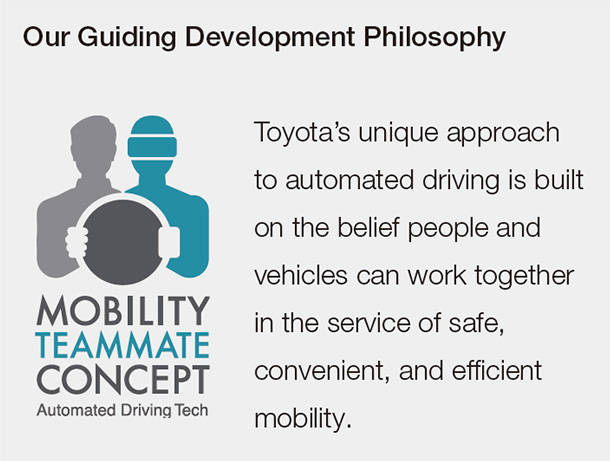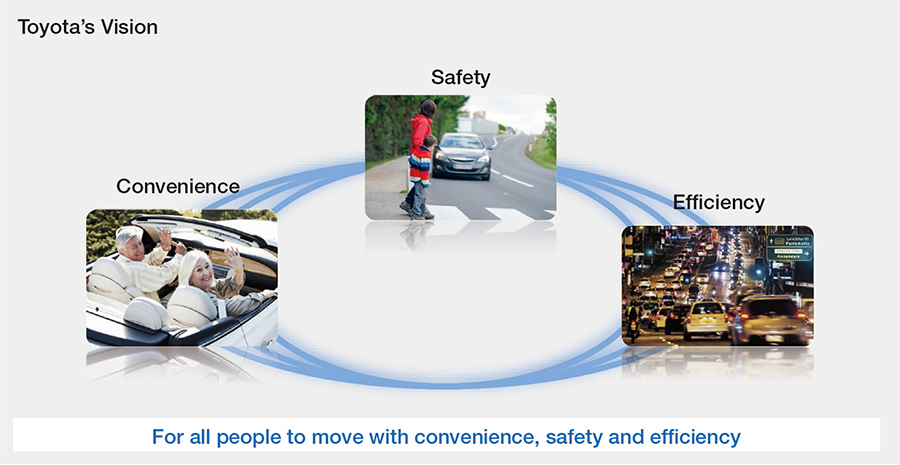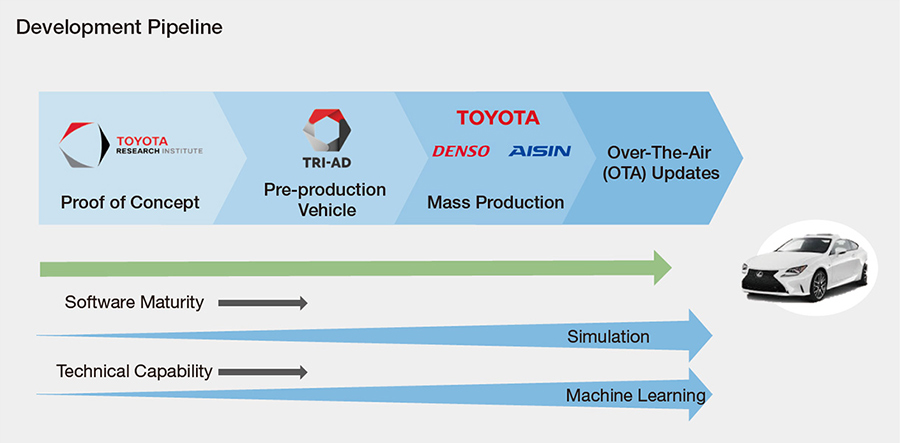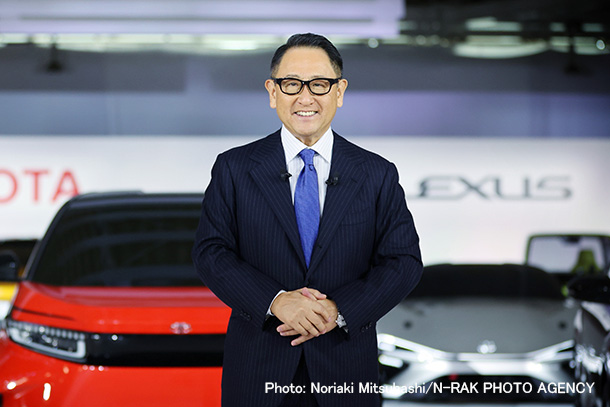Dec. 26, 2019
On the Path Toward Automated Driving, Drivers and Cars Are Like 'Teammates'
-

-
Gill A. Pratt
Fellow* - *Title as of December 2019
Since the 1990s, Toyota has engaged in active safety and automated driving technology research and development with the primary goal of eliminating traffic casualties.
Today, Toyota is advancing research and development based on its Mobility Teammate Concept. This concept is built on the belief that people and vehicles can work together as teammates in the service of mobility that is safe, convenient, efficient, and fun.
Toyota believes that cars will continue to be loved even in a future where some driving is automated. Active safety and automated driving technologies will also improve mobility for all, for example, by giving new independence to the lives of elderly individuals who otherwise would not be able to drive. The spread of these technologies in synergy with connected technologies also promises to reduce traffic congestion and lower atmospheric pollution from vehicle exhaust.
Toyota's Active Safety and Automated Driving Development Framework
Toyota's active safety and automated driving research and development efforts take place across complementary organizations that specialize by research areas and stages of technology development.
Toyota Research Institute (TRI) is headquartered in Silicon Valley and uses AI and research vehicles to advance the development of automated mobility. TRI leverages deep collaborations with research universities from its operating locations in Ann Arbor, Michigan and Cambridge, Massachusetts.
Toyota Motor Europe researches recognition technology and Toyota Central R&D Labs focuses on improving sensor technologies.
Toyota Research Institute-Advanced Development (TRI-AD) in Tokyo serves as a bridge connecting the innovation of Silicon Valley with Japanese master craftsmanship to accelerate development of the robust, production-quality software needed to bring TRI's technology to Toyota vehicles. TRI develops proof of concept vehicles that incorporate new capabilities; TRI-AD builds on these, incorporating TRI's automated driving research and working to mature both the software and hardware to create viable pre-production vehicles. Innovation will continue even after vehicles are sold using Over-The-Air (OTA) updates for continuous performance improvements and added functionality. In this way, TRI-AD is the bridge to the creation of world-leading software for automated vehicles that achieves production level quality.
Toyota and TRI-AD are working toward mass production in partnership with the integrated vehicle control systems company J-QuAD DYNAMICS (established as a joint venture of DENSO, Aisin Seiki, ADVICS, and JTEKT). Together, these companies have formed a cooperative framework, spanning innovation to manufacturing as a unified team.
Toyota's Unique Approach to Active Safety and Automated Driving
Toyota is developing active safety and automated driving systems based on two research approaches: Toyota GuardianTM and Toyota Chauffeur, respectively.
Chauffeur's goal is to allow a vehicle to drive on its own, ultimately without human oversight or fallback responsibility. This approach can provide mobility for those who cannot currently drive because of age, infirmity, or other reasons. Toyota recognizes it is crucial not to underestimate the formidable hurdles to deploying such automated driving systems. Technologically, how do we train a machine to perceive and participate in the social ballet required to navigate through an ever-changing environment of human drivers? Sociologically, how long will it take until the public accepts the less frequent, but still inevitable, crashes that will occur with no one at the wheel?
Because of these difficulties, Toyota is using the same underlying technologies for Chauffeur to also develop Mobility Teammate and Guardian systems. This approach is designed to help improve safety by amplifying and enhancing the driver's capabilities, not replacing them, providing seamless assistance to the driver when the driving task is approaching or beyond their capability. Additionally, Toyota must make breakthroughs in performance of these systems versus hardware cost, so as to deploy the system in a larger number of vehicles.
Guardian can also be combined in parallel with the L4 and L5 automated driving systems developed by Toyota or other companies to enhance safety and quality. In other words, Guardian can serve as a check for Chauffeur-type systems, from another point of view, to provide redundancy and lower the chance of system failure.
December 2019
Gill A. Pratt
Fellow








